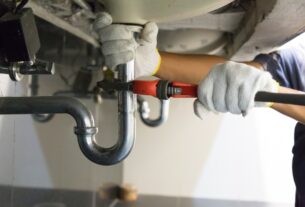/PouringConcreteSlab-715d832fef224f53a859947db1914b16.jpg)
What Is Fly Ash?
Fly ash is a team of products that can differ considerably in structure. It is residue left from melting coal, which is accumulated on an electrostatic precipitator or in a baghouse. It combines with flue gases that result when powdered coal is utilized to create electrical power.
Regarding 10 percent of this was generated as fly ash supplier in ksa. In 1996, even more than 7 million statistics loads were utilized in concrete in the UNITED STATE
Economically, financially makes sense to feeling as make use of this low-cost ash low-priced possible, feasible if particularly can be used in concrete as a substitute for replacement.
Coal is the item of countless years of breaking down veggie issue under pressure, and also its chemical structure is unpredictable.
On top of that, electric companies maximize power manufacturing from coal making use of ingredients such as flue-gas conditioners, salt sulfate, oil, and also various other ingredients to manage rust, discharges, and also fouling.
The resulting fly ash can have a variable make-up and also include a number of ingredients in addition to items from insufficient burning.
The majority of fly ash is pozzolanic, which implies it’s a siliceous or siliceous-and-aluminous product that responds with calcium hydroxide to develop a concrete.
Correctly chosen fly ash responds with the lime to develop CSH– the very same sealing item as in rose city concrete. This response of fly ash with lime in concrete enhances stamina.
Commonly, fly ash is contributed to architectural concrete at 15-35 percent by weight of the concrete, yet as much as 70 percent is included for mass concrete utilized in dams, roller-compacted concrete sidewalks, as well as parking lot.
Unique treatment needs to be absorbed picking fly ash to make certain enhanced homes in concrete.
Criteria
There are 2 courses of fly ash: “F” is made from melting anthracite and/or bituminous coal, as well as “C” is generated from lignite or subbituminous coal. In Canada, there is an additional difference. When the lime material is 8-20 percent, it is identified Cl, as well as when it is greater, it is course C.
In the USA and also various other parts of the globe where UNITED STATE requirements have actually been taken on, the chemical part of the requirements needs just a mixed overall of silica, alumina, as well as iron oxide.
It does not define the quantity of silica that responds with lime to create additional toughness. The alumina material could be high in fly ash, which could be destructive since even more sulfate to manage its sensitivity could be needed.
Sulfate is contributed to the concrete to manage just the establishing responses of the aluminates and also ferrites in the concrete. The quantity is restricted since extensive responses are feasible after the concrete has actually established.
This quantity of sulfate does not take into consideration the additional aluminates that can be included when fly ash is made use of. Way too much iron oxide will certainly hamper the setup time.
For more information BUILMIX
In ASTM C618, the loss on ignition noted in the table of needs is much less than 6 percent, an afterthought really enables up to 12 percent.
Insufficient burning items such as carbon, which influences air entrainment, water-cement proportion, established, as well as the concrete’s shade, might trigger this ignition loss.
Fly ash is taken into consideration to have actually fulfilled C618’s demands if the 7- or 28-day stamina of an example with 20 percent fly ash reaches 75 percent of the control toughness in an ASTM C109 examination.
Both course C fly ash as well as slag have concerning 35 percent silica as well as a lot reduced calcium oxide than rose city concrete. In some fly ash, alumina and also iron oxide can be rather high, leading to reduced stamina and also uncommon setup time issues.



